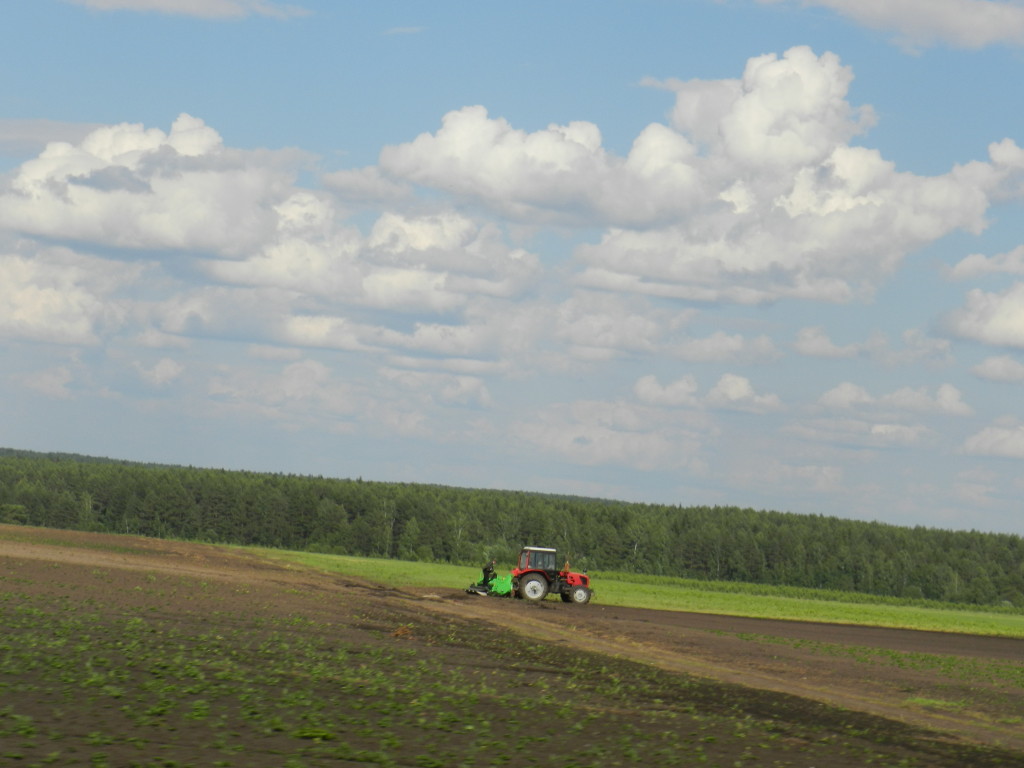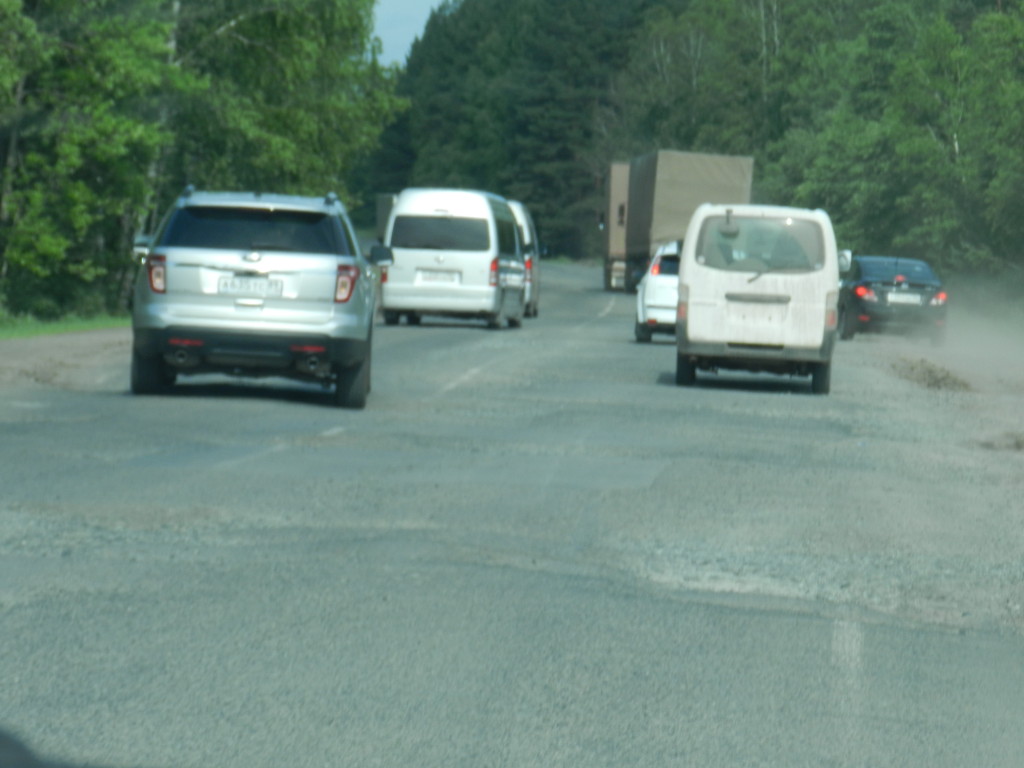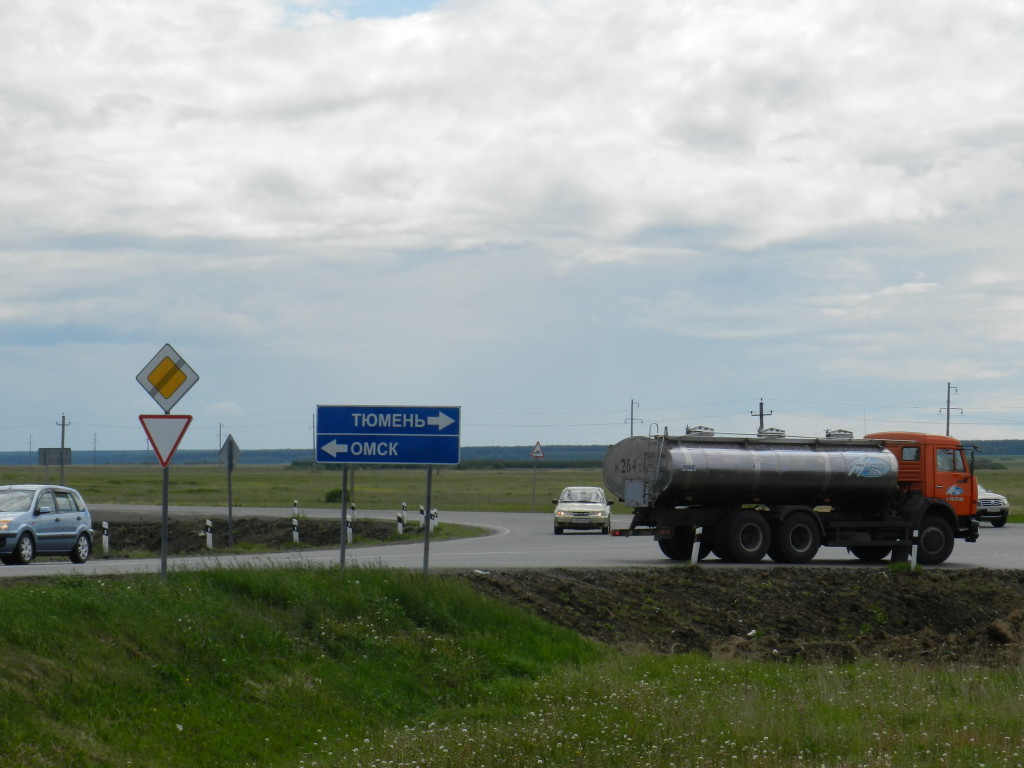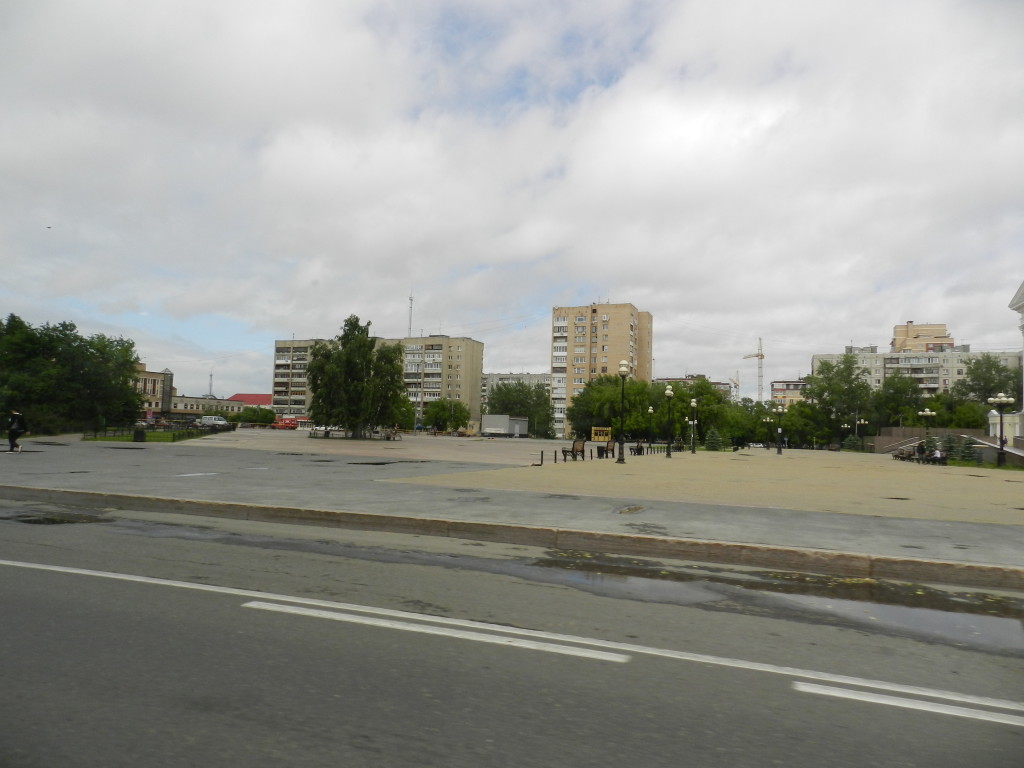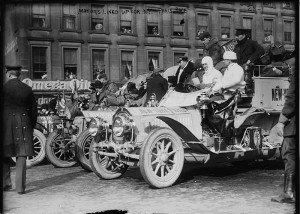Number of tie wraps: 24 (one added since last blog post)
Countdown: 5061 miles down, 3524 to go
Quote of the day: “Are you the one with the car?” (Security guard at the Russian Consulate to John when he arrived for his new passport)
During the drive to Yekaterinburg yesterday, the terrain changed to rolling hills with a mix of birch and fir trees as we came closer to the Ural Mountain Range. By most standards, the Urals aren’t much in the way of mountains; at the north end near the Kara Sea, the peaks rise to about 6,000 feet, but down south where we are, the highest elevation is about 1,200 feet. However, despite their short stature, the Urals are recognized as the dividing line between Europe and Asia.
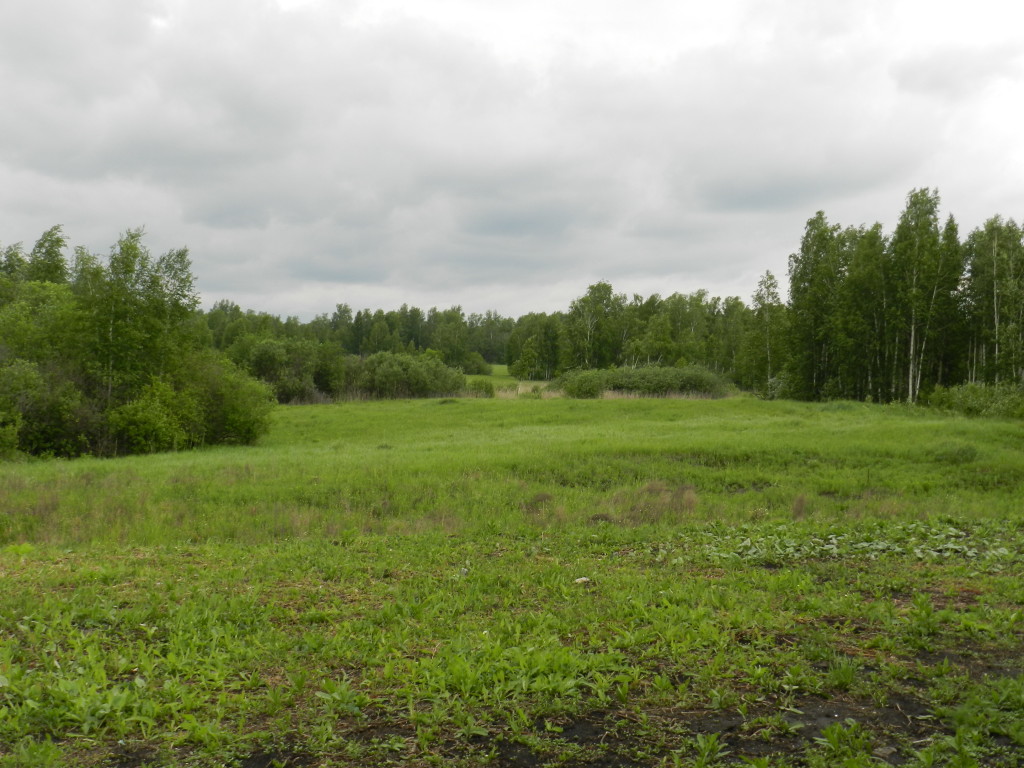
Rolling hills as we approach the Urals (Eileen Bjorkman photo)
The roads were good yesterday and, with only a few delays for construction and a short roadside pause for some police who wanted to take a picture of the Roadster, we arrived at our hotel in Yekaterinburg about 2 p.m. John and Ksenia left immediately for the U.S. Consulate and, six hours later, they returned with John’s replacement passport (good for one year). Yesterday evening, we also met our new guide, Natalia, who will accompany us from here to the Russian border, and our dinner became a combination hail to Natalia, farewell to Ksenia, and celebration over John’s new passport. This morning, Ksenia signed both cars and then John and Natalia disappeared to Russian Immigration to try to replace John’s visa while the rest of us went on a tour.
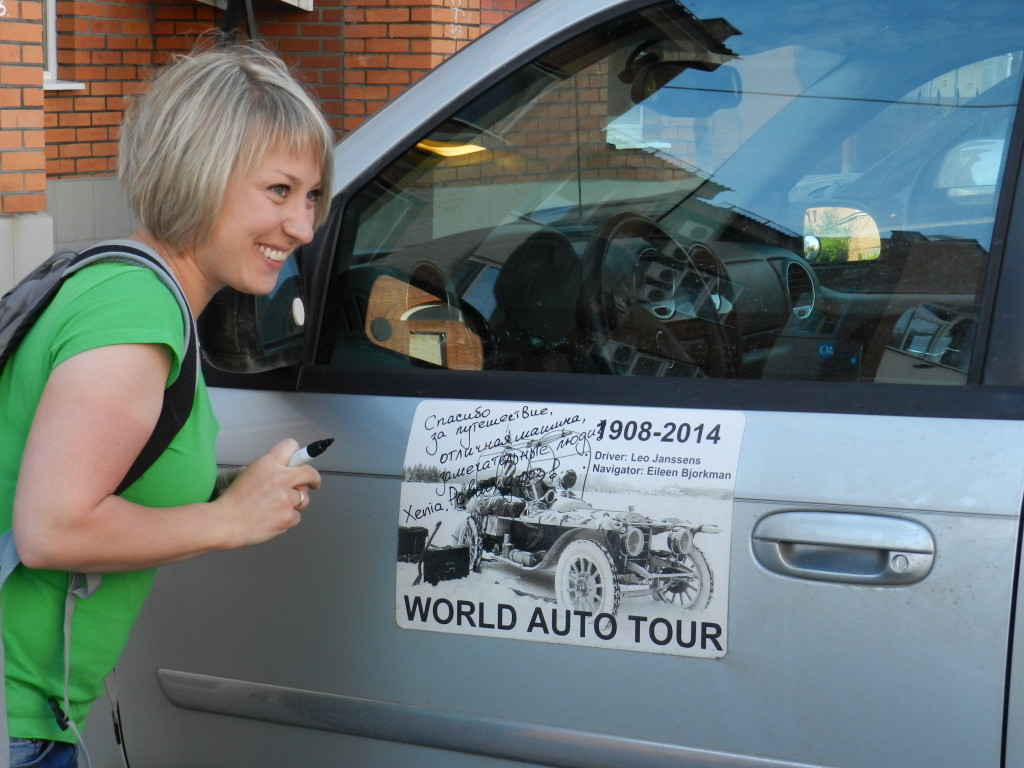
Ksenia signing Leo’s Envoy (Eileen Bjorkman photo)
Our tour today focused on some of the more grim aspects of the Russian Revolution and the days of Stalin. We first headed to the Political Repression Memorial, which is built on the mass gravesite of about 18,000 people who died in gulags between 1930 and 1950. The memorial is a series of walls engraved with the names of those known to have perished. I counted 46 walls of people.
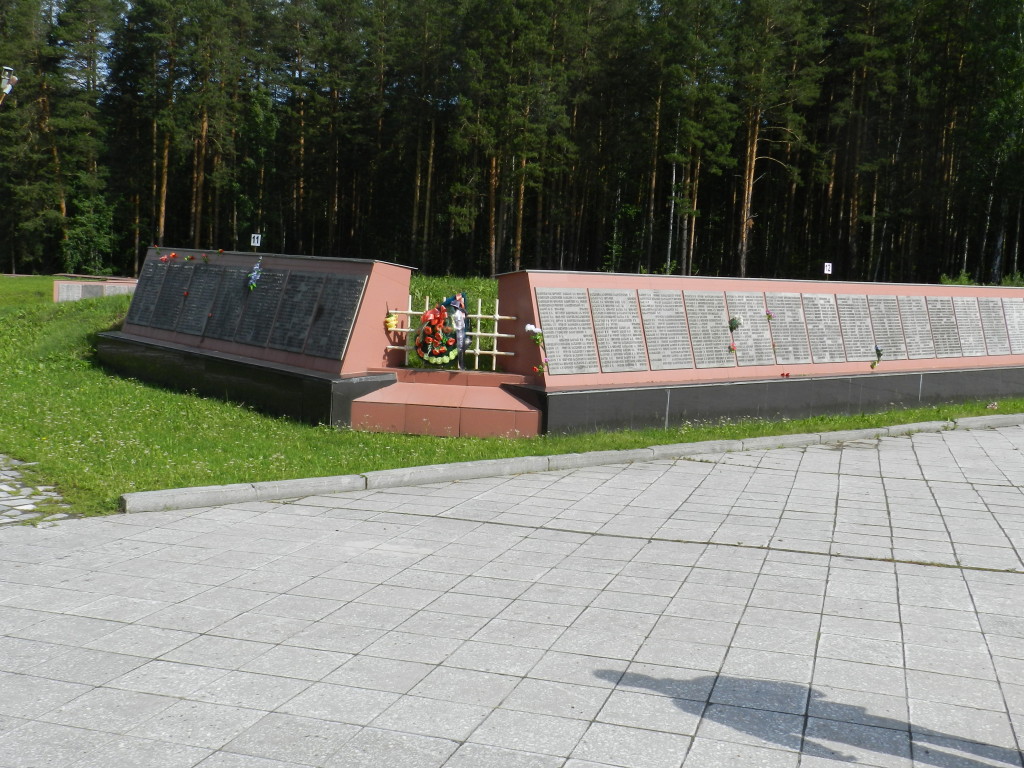
The Political Repression Memorial outside Yekaterinburg (Eileen Bjorkman photo)
We next visited the site which marks the Europe-Asia dividing line in the Urals. In 1908, when George Schuster passed by here, he etched his initials in the original monument built at the line in 1837. That monument was destroyed by the Soviets, but a boulder has been erected where it used to be.
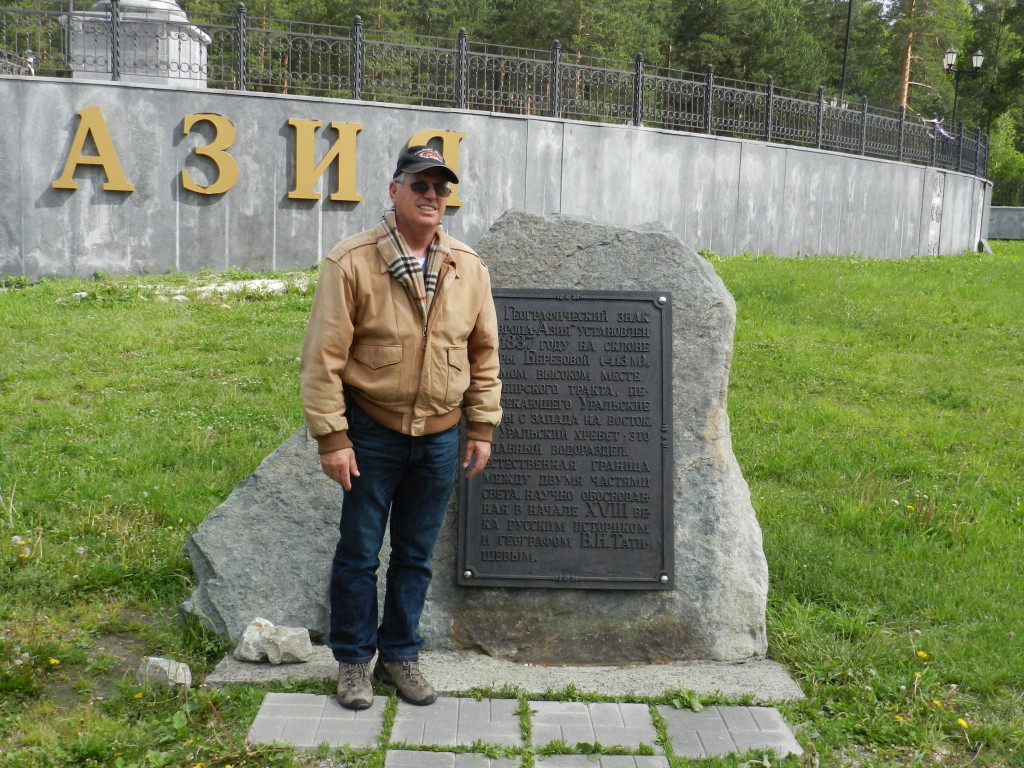
Site of monument where George Schuster engraved his initials in 1908 (Eileen Bjorkman photo)
The new monument was built just a few years ago, and you can see Asia on one side and Europe on the other.
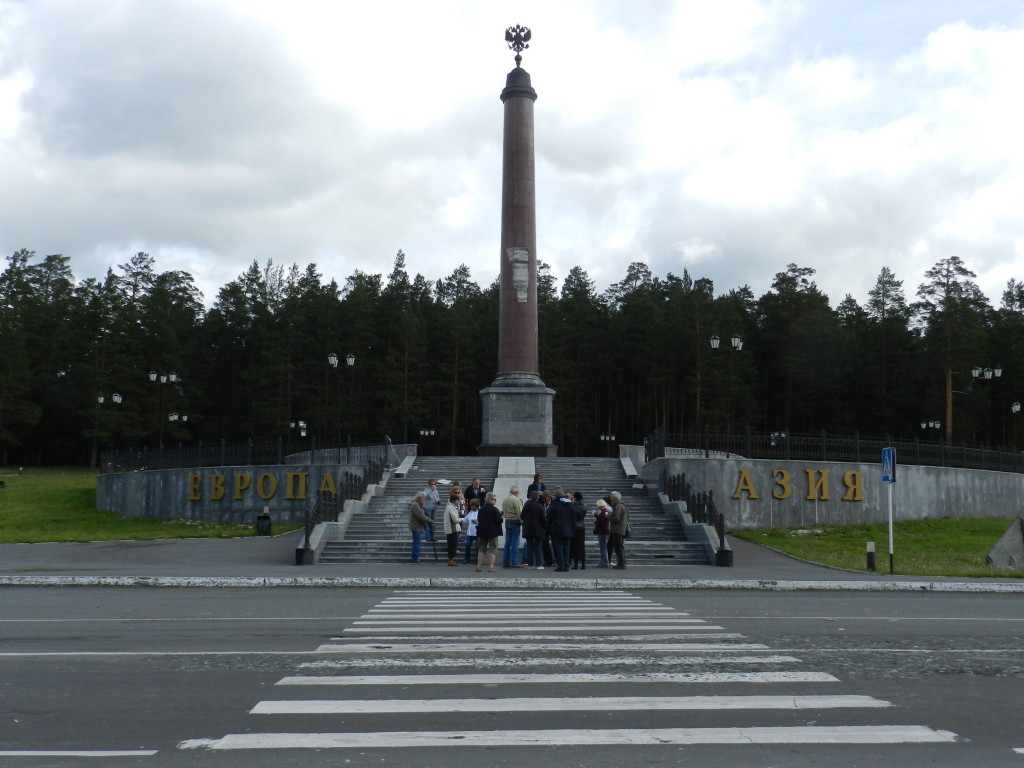
Current monument designating the dividing line between Europe and Asia (Eileen Bjorkman photo)
We also visited the remnants of the original monument, which has been restored and moved to a new location that we reached after a short hike through some woods. Alas, no George Schuster initials could be seen anywhere, but everyone had a chance to stand by the original memorial with one foot in Europe and one foot in Asia.
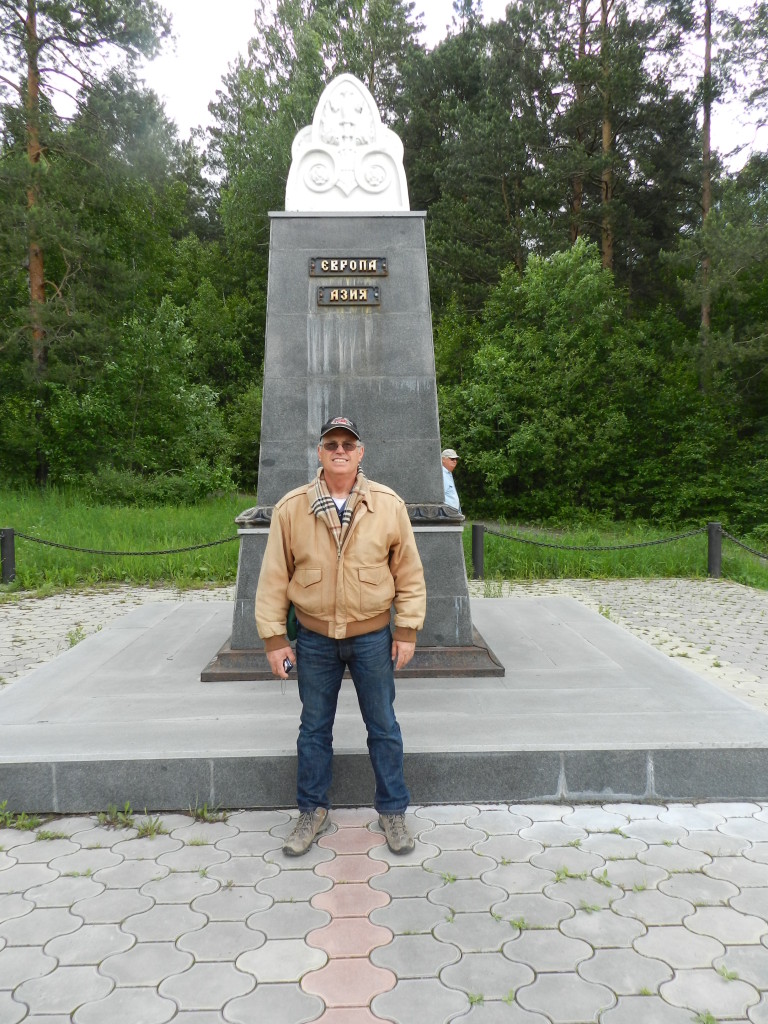
Luke with one foot in Europe and one foot in Asia by the remnants of the monument George Schuster engraved (Eileen Bjorkman photo)
Our final stop on the tour was the Church-on-the-Blood, a modern church built on the site where Tsar Nicholas II and his family were murdered on July 17, 1918. The seven family members (the Tsar, his wife, four daughters and one son) have been canonized as martyrs by the Russian Orthodox Church.
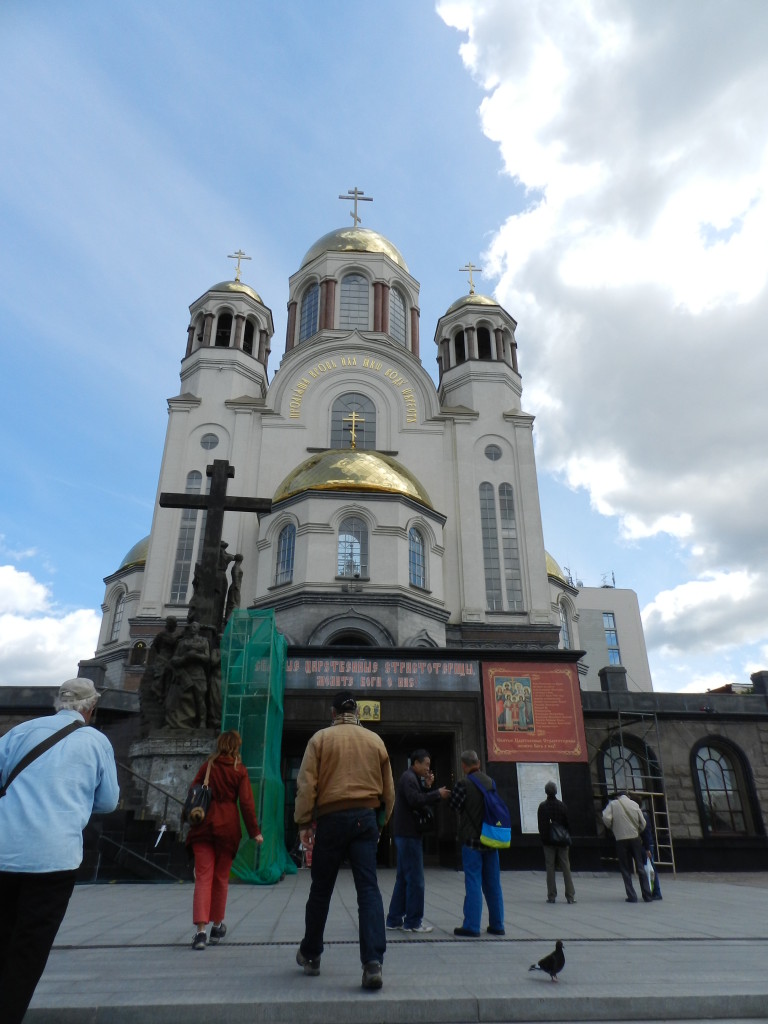
Church-on-the-Blood, murder site of Tsar Nicholas II and his family in 1918 (Eileen Bjorkman photo)
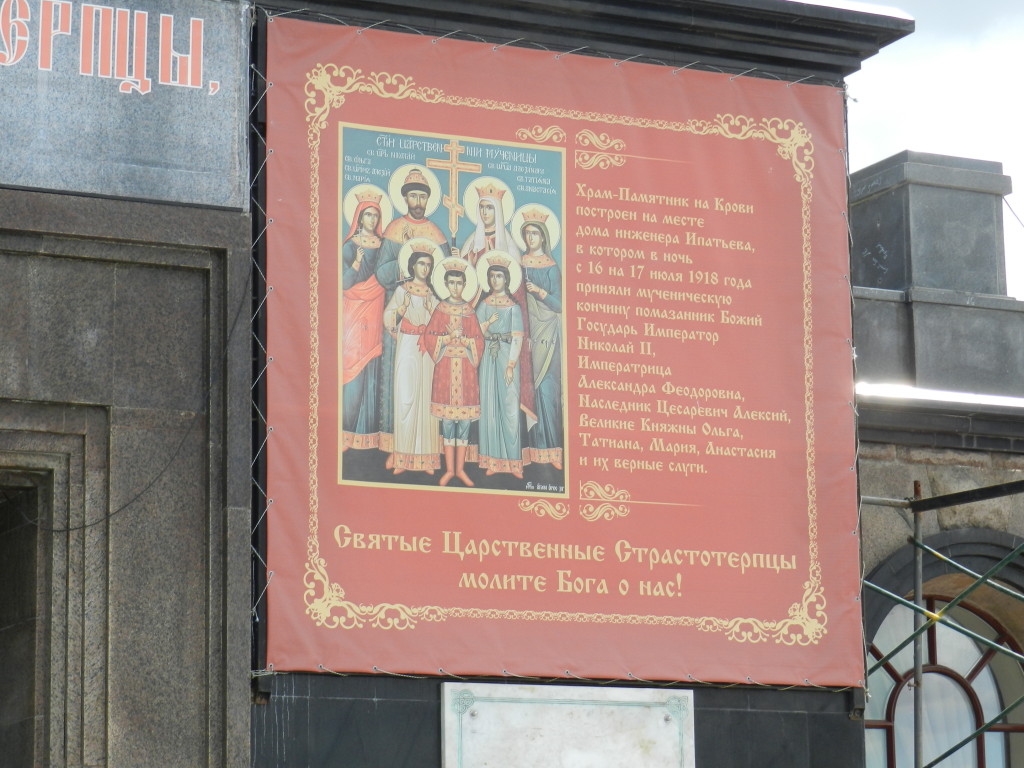
Romanov family canonized as martyrs by the Russian Orthodox Church (Eileen Bjorkman photo)
For those who are keeping track of the tie wraps, John added another one on Monday to keep the turn signal flasher unit attached to the steering wheel.
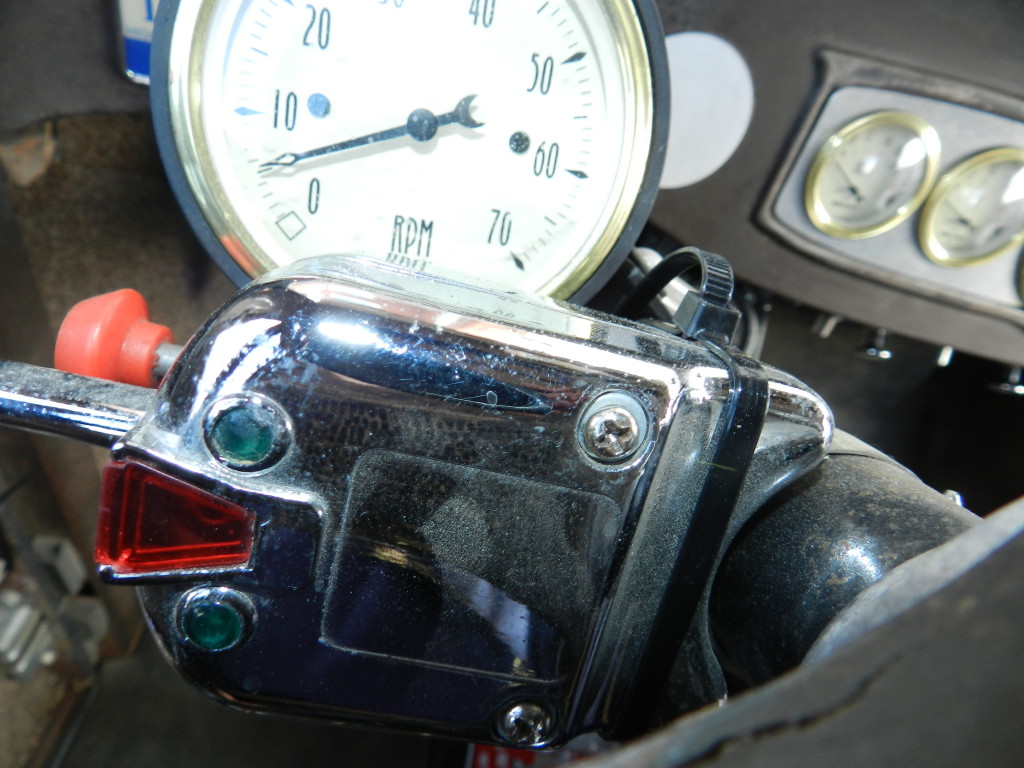
New tie wrap on signal flasher unit (Eileen Bjorkman photo)
Tomorrow (Wednesday), we drive to Perm, 258 km.
